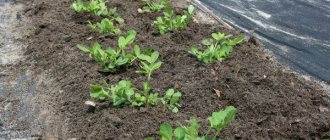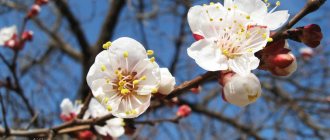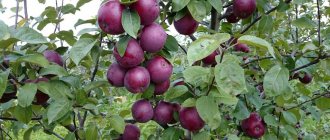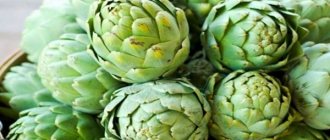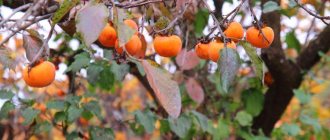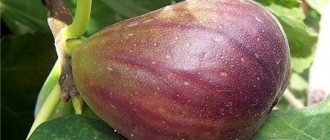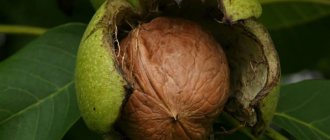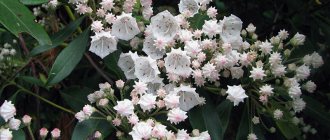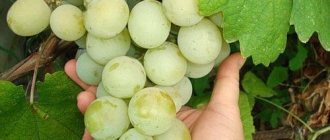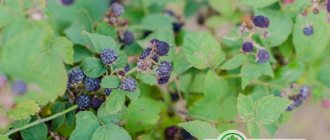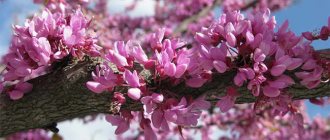Where does artichoke grow in Russia?
You can grow artichokes in your country house in Russia in places with a southern, warm climate, such as the Krasnodar Territory and the North Caucasus. In the south and in some regions of central Russia, the crop is grown as a perennial crop, and it easily survives the winter in good shelter.
In central Russia, due to recurrent frosts and sharp temperature fluctuations even in summer, heat-loving artichokes are often planted in greenhouses in the country or cultivated as an annual plant. Experienced gardeners know how to grow vegetables even in the harsh climatic conditions of the Urals and Siberia.
Important! When the temperature drops to 0 oC, the artichoke may die.
How does an artichoke grow?
Artichoke is a perennial herbaceous plant belonging to the Asteraceae family. Sicily is considered its homeland, but the intricacies of growing vegetables were known back in Ancient Greece and Egypt.
In appearance, the artichoke is similar to the thistle; it is not for nothing that the plants are considered close relatives. The vegetable differs from thistle in its larger flowers, growing in the form of baskets, the diameter of which reaches about 20 cm. The inflorescences are round or conical in shape, surrounded by multiple scales, in the upper part the color has a lilac-blue tint. The flowers have a large number of useful properties, are grown by gardeners in their dachas and are widely used in cooking.
The artichoke has large and wide carved leaves up to 50 cm long, covered with white hairs below. Its feathery foliage at the end of the stem forms a powerful basal rosette; the bush reaches a height of 1.5 m. The stems are branched and dark green in color. The roots are long, thick and strong. The fruit is an achene with oblong seeds inside.
This vegetable grows in the country as follows: first, a rosette is formed from horizontally growing leaves. The total volume of foliage reaches 1.5 m. Closer to the second week of August, a single peduncle forms in the center, which later becomes branched. Subsequently, the first basket buds appear at the end of the peduncle. Fruit ripening, depending on the variety, occurs in August or September.
In total, 10 varieties of plants are found in nature, but only a few of them can be grown in the country and eaten:
- Cardon is a wild Spanish artichoke, the length of which reaches 2 m. In cooking, only the leaves and stems are used;
- Prickly artichoke, which can be grown in the countryside in regions with warm climates as a vegetable crop. The fleshy core of unblown inflorescences, roots and petals are eaten;
Varieties of artichokes
As noted above, the artichoke has many varieties, of which no more than 40 are edible. However, of these 40 varieties, about 10 are most often used in cooking. Vegetable growers around the world consider only two types to be the most delicious and healthy:
- Spanish artichoke;
- prickly artichoke.
In each type, several varieties can be distinguished that have the most favorable growing conditions and ripening periods:
- Handsome. It has gained wide popularity among summer residents, and there are reasons for that. The first of them is high productivity. This is not surprising, because the plant begins to bear fruit already in the first year after planting. The second reason lies in the relative ease of cultivation compared to other varieties. The artichoke bush of the Krasaviets variety reaches a height of about 1 meter. Up to 12 inflorescences are formed on it, which reach a mass of 110 grams.
- Purple early. As you already understood from the name, the variety belongs to the early category. The bush of the plant is low compared to other crops, and grows no higher than 70 centimeters. No more than a dozen inflorescences are formed on it, the weight of which fluctuates around 100 grams.
- Sultan. The largest variety, the bush of which reaches up to 2 meters in height. The plant is mid-season and has 15 inflorescences, the weight of which does not exceed 90 grams.
- Gourmet. Like Sultan, it belongs to the mid-season varieties. The bush is quite tall, about 1.5 meters, but the inflorescences do not weigh that much. Average weight is 80 grams.
Is it possible to grow an artichoke in the garden?
All over the world, artichokes are known for their taste and nutritional properties. Even in pre-revolutionary Russia, gardeners were famous for their ability to grow this crop in difficult climatic conditions. Subsequently, this unusual vegetable even began to be sold to neighboring countries.
In the southern regions, the plant is propagated by dividing the rhizomes, due to which the crop ripens in July. In temperate climates, artichokes can also be grown through seedlings. In this case, the harvest should only be expected to ripen towards the end of August.
Growing an artichoke at home in your own dacha is not difficult, the main thing is to follow the recommendations described in the article.
First of all, you need to choose a suitable variety, decide on planting dates and become familiar with the features of agricultural technology.
How to grow an artichoke from seeds at home
When choosing seeds, great attention should be paid to the early maturity of the variety; for convenience, the table is given below.
| Early | Mid-season | Late |
| Purple early | Handsome | Maikop tall |
| Maisky-41 | Gourmet | Large green |
| English early | Sultan | Laonian |
Advice! To grow an artichoke at your dacha in central Russia, you should give preference to early-ripening varieties.
When to plant an artichoke from seed?
Planting artichoke seeds of early ripening varieties for seedlings for the garden begins with the onset of March. It is recommended to make preliminary preparations from mid-February, leaving 3 to 4 weeks in reserve.
The growing season of the plant takes on average from 180 to 200 days, so growing artichokes in the country in most regions of Russia is carried out exclusively using the seedling method.
Preparation of soil and planting containers
You can grow artichoke seedlings for your garden by planting seeds in wooden boxes or containers. As a soil, it is best to prepare a fertile mixture using turf soil, humus and river sand in equal proportions. All components must be thoroughly mixed together and moistened.
Seed preparation
To grow strong seedlings for the garden and increase the germination of seeds, they must first be prepared before planting:
- Soak the seeds for a day, immersing them in a container with settled water at room temperature.
- Transfer to a damp gauze cloth and leave for 5 - 6 days for germination at a temperature of 22 - 25 oC.
- A week after the seeds germinate, you need to transfer them to a cool place for hardening for 2 - 3 weeks, for which the bottom shelf of the refrigerator is perfect.
Rules for planting artichoke seeds
Planting artichoke seedlings for the garden is not difficult, the main thing is to adhere to the following seed sowing algorithm:
- Place a layer of several centimeters of drainage on the bottom of the selected container to avoid stagnation of excess liquid.
- Lay out a layer of the prepared fertile mixture, leaving about ¼ of it unused.
- Form planting holes 1.5 cm deep, maintaining a distance of 4 -5 cm.
- Place the seeds in them, trying not to damage the sprouts, which by this moment have stretched 0.5 - 1 cm. Sprinkle with a layer of the remaining soil, no more than 1 cm thick.
- Moisten the soil by spraying from a spray bottle.
- Place the container in a warm, bright place, avoiding direct sunlight. Seedlings can even be grown on a windowsill.
- Seedlings do not need to be covered with film or glass.
Caring for artichoke seedlings
Within a few days after planting, sprouts will begin to appear. After 10 - 14 days, the formation of the first true leaf ends, after which the temperature in the room is reduced to +15 oC, this allows you to grow stronger seedlings for the garden and prepare them for a climate that is not always mild and warm.
To avoid excessive stretching of the sprouts upward, it is necessary to provide them with good, uniform lighting.
Important! Watering should remain moderate; excess moisture can harm plants that have not yet matured.
After the formation of several leaves, the seedlings are picked into separate containers, which should be spacious, with a volume of at least 500 ml. For transplantation you will need:
- Fill the pots with the nutrient mixture, make holes in the center, and water lightly.
- To remove plants from a common container, the soil must be moistened abundantly. Then, carefully, one by one, pull out the sprouts, pinching the end of the very central root. This way the rhizome will develop better.
- Plant the bushes in separate pots, water them abundantly and place them on the windowsill in a warm and well-lit place.
Seedlings need regular watering as the soil dries out. After 2 weeks, the first feeding is done with mullein infusion, which is diluted with water in a ratio of 1:10. After another 2 weeks, the bushes are fed with complex mineral fertilizers.
After fertilizing, the seedlings begin to harden and prepare for transplanting to the dacha. In warm and windless weather, it is taken outside for several hours. The time spent in the fresh air is gradually increased to 10 hours, not forgetting to protect the sprouts from rain and direct sunlight. This will allow the seedlings to grow stronger.
Below is a photo of growing artichoke seedlings.
Which artichoke seeds should you buy?
Artichoke (Cynara) is a perennial of the Asteraceae (Asteraceae) family. It is unpretentious, almost like thistle or burdock. True, only in the south. It has been grown there since ancient times. Artichokes were known in Ancient Egypt, Rome and Ancient Greece. Our climate is also suitable, but not in everything. Gardeners and gardeners are interested in species that have large and tasty fruits (achenes). The “external characteristics” of the thorny giants are also important. These are the spiny or true (Cynara scolymus), and the Spanish artichoke (Cynara cardunculus), known as cardon . There are other types, edible and inedible. But the most popular ones are cardon and real artichoke.
Spanish artichoke
When choosing seeds, you should pay attention to early maturity. Early varieties: “May 41”, “Violet early”. Mid-season varieties: “Gourmet”, “Krasavets”, “Sultan”. Late varieties: “Large green”, “Maikopsky tall”.
Planting and caring for artichokes in open ground
Growing and caring for artichokes, contrary to popular belief, is not a difficult process at all. In a properly selected area of the dacha, the plant will actively bear fruit and bloom. To grow a vegetable, you first need to familiarize yourself with the peculiarities of agricultural techniques for growing artichokes in open ground.
Optimal conditions for growing artichokes
For full growth and development in the country, one plant will need at least 1 square meter. m area and fertile soil layer at least 50 cm deep. If you try to grow an exotic vegetable in poorly prepared soil, its flowering may never begin.
Artichokes cannot be grown at the dacha in lowlands and shaded areas. Too dense soil can also slow down the plant's growth and flowering. Northern winds and high groundwater levels are completely destructive for artichokes. Its roots penetrate deep into the ground and begin to rot when there is excess moisture. High fences, trees, and other plants, especially bindweed, should not be located near the planting site.
Advice! The optimal place to grow an artichoke is the southern side of the cottage with light, nutritious, well-fertilized soil with a humidity of 75 - 80% and an acidity of at least 6.4 pH.
The vegetable grows and develops well in temperatures from +15 to +25 oC. In spring, young seedlings can withstand cold temperatures down to -3 oC. In autumn, a temperature of -1 oC will be critical for inflorescences. In mild winters, artichoke roots can easily withstand frosts down to -10 oC. During germination, seeds can be kept at zero temperature for no more than 1 month.
With insufficient watering, the growth of the plant stops, its inflorescences become small, and the receptacle becomes coarser.
How to plant an artichoke correctly
Seedlings are planted in open ground at the end of May or early June, 2 months after planting the seeds. After the last spring frosts have retreated, the soil should have time to warm up thoroughly and the weather should become steadily warm.
There are two ways to grow an artichoke in the country, depending on the purpose of planting. If cultivation has only decorative purposes, then you need to choose a location that is clearly visible and has a convenient approach. Artichokes can be grown along driveways, in front lawns or in open areas in the garden.
How to grow an artichoke in the country for decorative purposes:
- Dig planting holes 50 cm deep and about 80 cm in diameter. The distance between the holes should be approximately 1.5 m.
- Fill the holes with a mixture of turf soil and compost, taken in a 1:1 ratio.
- Plant the seedlings together with a ball of earth, water and mulch with dry grass.
If you plan to grow a vegetable in the country for further consumption, then a more thorough approach is needed.
- Preparatory procedures should be carried out in the fall; for this, the beds are dug up and a bucket of humus is added per 1 square meter. m.
- A week before planting, the soil must be dug deep again, fertilizer consisting of 200 g of superphosphate, 40 g of calcium sulfate and 10 kg of humus per 1 square meter must be applied. m.
- Form beds about 20 cm high at a distance of 1 m from each other, prepare planting holes the same as for growing for decorative purposes, and fill them with a nutrient mixture of soil.
- Place the seedlings in the holes along with a lump of earth, water generously and mulch.
Watering and fertilizing
After planting at the dacha, the seedlings are thoroughly watered until they finally take root. When the plant adapts a little, it is first fertilized with manure.
Artichokes in the country require regular watering, especially during periods of drought. It is important not to overdo it with the amount of water: for 1 sq. m. use about 7 liters of liquid. During flowering, watering should be more rare and moderate.
In order to grow a bountiful harvest of vegetables at the dacha, fertilizing is done 3-4 times over the entire summer period. Both organic and mineral fertilizers are suitable as fertilizing. It is considered optimal for a dacha to alternate watering with manure (calculated at 0.5 - 1 liter per bush) and spraying with a solution containing:
- 1 part superphosphate;
- 1 part potassium chloride;
- 2.5 parts wood ash.
Important! It is better not to overuse nitrogen-based fertilizers, otherwise you can grow a bush with foliage that has grown excessively, to the detriment of the formation of flower stalks.
Weeding and loosening
Timely weeding for artichokes is also important. The garden beds are weeded as weeds appear: this is necessary so that they do not suck nutrients from the soil, thereby depleting the soil.
The soil around the plants is regularly loosened, this makes it lighter and airier.
Measures to increase productivity
There are several ways to increase artichoke yields.
- To grow large vegetables in the country, leave no more than 4 flowers on one plant; all the rest need to be cut off and thrown away.
- A couple of weeks before ripening, the stems under the baskets are carefully pierced with a toothpick.
- Helps in stimulating flowering and creating artificial drought before fruiting begins.
Advice! At first, the plant will make little use of the allotted space in the country house. For compaction, you can grow any early-ripening crop next to it, for example, radishes, lettuce or spinach.
Preparing for winter
Only in the southern regions can the artichoke be grown in the country as a perennial plant. To do this, after flowering has ended, watering should be gradually reduced, preparing the artichokes for winter. If you plan to independently harvest seeds in the future, leave several inflorescences on the plant and give them time to fully ripen.
During cold winters, even in a warm southern climate, the roots can freeze, and in damp weather with frequent thaws they rot. And therefore, when growing a vegetable such as an artichoke, preparation for wintering in the country should be done with special care.
Before the arrival of frost, the central stem is cut off, the main leaf mass is removed, and the bed is covered with a dense layer of peat or earth at least 20 cm thick. After that, a shelter is built from fallen leaves or straw and covered with spruce branches on top. During thaws it is partially raised, and during cold spells down to sub-zero temperatures it is returned to its place. It will be possible to completely remove the shelter only in mid-April.
In central Russia, it will not be possible to grow a perennial artichoke in the country, because its roots die at temperatures below -10 oC.
Care
After the most labor-intensive part is completed, it’s time to start caring for and further developing the bushes.
Picking seedlings
If the seedlings were sown in a common container, it is necessary to pick. Containers with a volume of about 0.5 liters are suitable for this. It's done like this.
- We prepare soil from humus and sand. Make a hole in the center of each container and water it.
- We water the plants in a common container and remove them one by one.
- The main root of each plant is pinched, and the seedlings are moved into pots. After this, they are watered and put in a warm place.
- After 2 weeks, the plants are fertilized with mullein, diluted in water in a ratio of 1 to 10. After another 14 days, mineral fertilizer complexes are added to the soil.
Picking should be done very carefully so as not to damage the thin roots.
To strengthen the plants, hardening is carried out. To do this, in calm, warm weather, plants are taken out into the air.
Watering the bushes
Watering is done in the afternoon every other day, using a small amount of water. You can also water the bush once every 2 weeks, using up to 5 liters of water. Regardless of the schedule, it is necessary to water the plants evenly, avoiding overdrying and excessive moisture. Otherwise, the roots may rot or dry out.
Loosening the soil and removing weeds
The most convenient option for loosening is a day after watering. This will prevent the water from evaporating too quickly and the roots will not rot. Simultaneously with loosening, weeding can be carried out. It helps to ventilate the soil and saturate the roots with oxygen. There are no special recommendations here, the main thing is not to let the bushes grow for a long time. Find out about treating tomato seeds before planting seedlings here.
Fertilizers and fertilizers
Artichokes are fertilized with conventional mineral complexes, and when the bushes grow, they can be fertilized using the foliar method by spraying. To do this, mix 1 teaspoon of wood ash with 1 teaspoon of superphosphate and 3 teaspoons of potassium chloride.
This fertilizer not only strengthens the bushes, but also helps repel harmful insects.
Shelter for the winter
To make shelter in open ground, you need to do the following.
- We cut the stems of the plant so that the tips are no more than 30 centimeters from the ground.
- Cover the bush with burlap, covering or other dense material.
- We cover the ground around with sawdust, straw, and fallen leaves. The layer is about 30 centimeters.
- The base of the bush and roots can be tightly covered with snow.
The bush must be covered to avoid freezing.
Protection from diseases and pests
Like many other plants, the artichoke is attacked by slugs and aphids, happily eating the greens. You need to fight them with special products sold in garden stores. A disease exclusively affecting artichokes is petal rot. For treatment, special preparations are also used. Before starting treatment, try to establish the cause of the rot: alkalis, acids, overdrying, parasites, and so on.
Features of growing artichokes in different regions of Russia
Many gardeners try to grow such an exotic crop as the artichoke in their dachas. When planting, it is important to take into account that for each region of Russia the growing process will have a number of features. Many factors depend on climate, precipitation and winter temperatures.
How to grow an artichoke in the Moscow region
The method of growing artichokes in the Moscow region depends on the area in which the crop is supposed to be cultivated. In the southern regions you can grow artichokes, which will easily survive the winter in the countryside in a shelter.
In the northern part of the Moscow region, planting and caring for artichokes are somewhat different. In the first year, the plant rarely produces a good harvest. In the fall, before the onset of frost, the artichoke stems are removed from the ground, the outer foliage is cut off, leaving only the central young leaf and roots. Throughout the winter it is stored in this form on a shelf in a cellar or basement.
How to grow an artichoke in Siberia
Growing artichokes at the dacha in Siberia can only be done by seedlings as an annual plant. Severe Siberian frosts can destroy a plant even in autumn.
To grow an artichoke at a dacha in Siberia using seedlings, seeds begin to germinate no later than February.
For more information on growing and cleaning artichokes, watch the video:
How to grow an artichoke in the Urals
Growing artichokes in the country is also possible in the Urals. Preference should also be given to the seedling method. The method of hardening seedlings described in the article will help strengthen the seedlings in advance before planting in open ground.
Some gardeners in the Urals grow artichokes in a greenhouse at their dacha. To make the plants comfortable, it should be spacious and well lit.
Description
Branched stems can reach 2 meters in height. The pinnately dissected bluish-green leaves are covered with spines. Slightly branched stems are crowned with flat-round, oval or spherical inflorescences.
Unopened fleshy baskets (receptacles), collected both before and after flowering, are eaten. The mature flowers resemble thistles (blue or purple in color).
This vegetable delicacy contains:
- proteins – up to 3%;
- vitamins B1 (thiamine), B2 (riboflavin), C;
- carotene;
- carbohydrates – up to 11%;
- inulin (starch substitute for diabetics).
Artichokes can be used raw, boiled or canned. Artichoke vegetable salads are very popular among gourmets.
Recently, more and more drugs based on artichoke have been produced, in particular with hypocholesterolemic, choleretic and diuretic effects. Cynarin, present in the composition, improves the well-being of older people and reduces cholesterol levels.
Artichoke-based medicines are used to treat allergies, atherosclerosis, hepatitis, jaundice, cholelithiasis, psoriasis, eczema, and endarteritis. Artichoke is recommended for use by patients who have had kidney or liver surgery.
Harvest and storage
Indicators of the ripeness of artichoke baskets are the upper scales: when they begin to bend outward, the vegetable is considered fully ripe and can be cut.
Advice! The baskets are cut, capturing a part of the stem 4 - 5 cm long. How to cut the plant correctly is shown in the photo.
The ripening of the baskets occurs unevenly, therefore, as a rule, the harvest continues to be harvested until frost. When blue petals appear on the tops of the inflorescences, the vegetable becomes unsuitable for consumption.
Cut artichokes should be stored for no more than a month at 0 oC. The remaining harvest can be frozen.
Artichoke picking
Artichokes must be harvested during the period of their technical maturity, i.e. at the moment of opening of the upper scales on the inflorescence. Therefore, when flower stalks appear on the plants, you need to carefully monitor them, because the blossoming flowers become hard and unsuitable for food.
If you want the baskets to grow larger, leave 3 peduncles on the plant and no more than 4 baskets on each, remove the rest.
The artichoke “cones” do not ripen at the same time; they are cut off, capturing part of the peduncle, and stored in a cool room.
At a temperature of about 1°C, artichokes can be stored for up to three months, and at 12°C – no more than 4 weeks.
Reproduction
You can grow an artichoke at your dacha in the southern regions by sowing seeds in open ground. In other climatic conditions, gardeners prefer propagation by seedlings or vegetative methods.
When choosing a vegetative method in the fall, the most powerful bushes need to be dug up, placed in a box, sprinkled with dry peat, and taken to a cellar or basement. Around the first half of May, the shoots that have formed over the winter are cut off with a small part of the roots and the plant is planted in a bulk container for rooting at room temperature. The artichoke is planted in a permanent place after 20 - 25 days.
Preparation of planting material
Cultivation begins from seeds. It is better to buy them from trusted suppliers who have appropriate varietal certificates. Purchasing seeds “from hand” is a very risky undertaking, since you may end up with a completely different crop than what is required. For cultivation on domestic plots, it is recommended to use varieties included in the State Register. When using them, there is a greater chance of getting the desired harvest than when cultivating imported crops, which may not be adapted to growing in a different climate.
Artichoke is a very heat-loving plant. Even a slight drop in temperature below zero can destroy an entire plantation of young bushes. Therefore, it is recommended to grow it in seedlings. The crop can be grown from seeds planted directly into the ground. But this method is more suitable for southern regions with early retreat of frosts in spring and long summers.
Related article:
Salt solution against pests for onions in the garden
When preparing seeds, many gardeners advise performing the vernalization procedure. It will harden the plant and contribute to the appearance of a rich harvest within the first season. However, when growing a perennial crop, such a procedure can negatively affect productivity in the second season. In this case, the plant becomes weak and is unlikely to survive the winter.
If vernalization is necessary, it begins around the 10th of February. The procedure itself looks like this:
- The seeds are soaked in water at a temperature of +21...23 C for about 10 hours.
- Next, they are wrapped in cloth or placed on moistened sand, and kept at a temperature of +23...+25 C. 6-8 days should pass before the seedlings hatch.
- As soon as the sprouts hatch, the container with them is placed in the refrigerator (preferably on the bottom shelf).
- The seedlings survive in this state for about two weeks. In the future, they can be transplanted into the ground.
Related article:
Which zucchini are suitable for the balcony?
If vernalization has not been carried out, then it is still better to germinate the seeds. Otherwise, you will have to wait 1.5-2 weeks for the first shoots. Without preliminary vernalization, work begins in early March.
It is recommended to choose individual containers for seedlings to avoid picking in the future. At the initial stage, small volume cassettes are used. They are filled with loose fertile soil and sprouted seeds are placed. After about 20-30 days, the seedlings are transplanted into larger containers using the transshipment method, without destroying the soil ball with the root system.
The seedlings will be ready to move to a permanent place of residence in open ground after 50-60 days from the moment of germination. It is important that the weather is consistently warm outside and that the threat of frost has passed. The soil must be warmed up, otherwise the young bushes will stop growing.
Related article:
Cleaning and storing pumpkins
Pests and diseases of artichoke
Most often, vegetables are affected by the following diseases and pests:
- The sunflower moth is a butterfly that lays eggs near the inflorescences. The newly born caterpillars, penetrating into the shell of the baskets, damage it. For prevention, it is necessary to promptly get rid of weeds and loosen the soil between the rows. Nests with insects are removed, the affected parts of the artichoke are burned.
- Black aphids, which migrate to artichokes from other plants. Aphids suck juice from leaves and inflorescences. Spraying with a phytoncidal decoction will help get rid of it.
- Black rot is a fungal disease that leads to the drying out of young shoots and the appearance of dark brown spots on adult plants. In most cases, it is impossible to save the affected bush; it must be removed and burned. A preventive measure is disinfection of seeds before planting.
